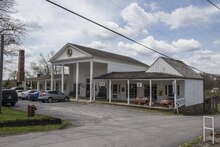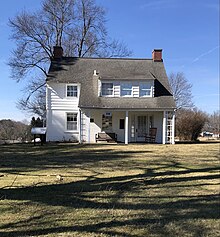A back-to-the-land movement is any of various agrarian movements across different historical periods. The common thread is a call for people to take up smallholding and to grow food from the land with an emphasis on a greater degree of self-sufficiency, autonomy, and local community than found in a prevailing industrial or postindustrial way of life. There have been a variety of motives behind such movements, such as social reform, land reform, and civilian war efforts. Groups involved have included political reformers, counterculture hippies, and religious separatists.

The Federal Emergency Relief Administration (FERA) was a program established by President Franklin D. Roosevelt in 1933, building on the Herbert Hoover administration's Emergency Relief and Construction Act. It was replaced in 1935 by the Works Progress Administration (WPA).

Lorena Alice "Hick" Hickok was a pioneering American journalist and long-term romantic interest of First Lady Eleanor Roosevelt.

The Resettlement Administration (RA) was a New Deal U.S. federal agency created May 1, 1935. It relocated struggling urban and rural families to communities planned by the federal government. On September 1, 1937, it was succeeded by the Farm Security Administration.

Blanche Wiesen Cook is a historian and professor of history. She is a recipient of the Bill Whitehead Award.

Marion Dickerman was an American suffragist, educator, vice-principal of the Todhunter School, and a close friend of Eleanor Roosevelt.

Nancy Cook was an American suffragist, educator, political organizer, business woman, and friend of Eleanor Roosevelt. She, Marion Dickerman and Roosevelt, were co-owners of Val-Kill Industries, the Women's Democratic News, and the Todhunter School.

Norvelt is a census-designated place in Mount Pleasant Township, Westmoreland County, Pennsylvania, United States, founded in 1934 as Westmoreland Homesteads. In 1937 it was renamed to honor Eleanor Roosevelt. The community was part of the Calumet-Norvelt CDP for the 2000 census, but was split into the two separate communities of Calumet and Norvelt for the 2010 census. Calumet was a typical company town, locally referred to as a "patch" or "patch town", built by a single company to house coal miners as cheaply as possible. On the other hand, Norvelt was created during the Great Depression by the federal government of the United States as a model community, intended to increase the standard of living of laid-off coal miners. Award winning writer Jack Gantos was born in the village and wrote two books about it
Jere is an unincorporated community in Monongalia County, West Virginia, United States.
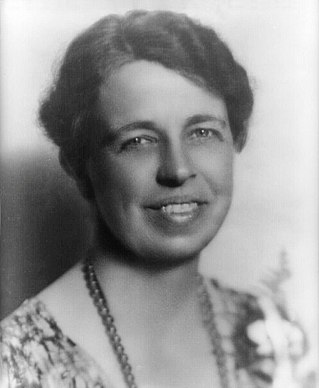
Anna Eleanor Roosevelt was an American political figure, diplomat, and activist. She was the first lady of the United States from 1933 to 1945, during her husband President Franklin D. Roosevelt's four terms in office, making her the longest-serving first lady of the United States. Through her travels, public engagement, and advocacy, she largely redefined the role of First Lady. Roosevelt then served as a United States Delegate to the United Nations General Assembly from 1945 to 1952, and in 1948 she was given a standing ovation by the assembly upon their adoption of the Universal Declaration of Human Rights. President Harry S. Truman later called her the "First Lady of the World" in tribute to her human rights achievements.
Colonel Lawrence Westbrook was a Texan politician and official in the administration of President Franklin D. Roosevelt. A 1908 graduate of the University of Texas and later the University of Texas Law School. Colonel Westbrook also served as a member of the Texas Legislature representing Waco, Texas. During World War I he attained the rank of lieutenant colonel in the Army Signal Corps. He was among the pallbearers of Felix Huston Robertson, a war-criminal known for the Saltville Massacre of black soldiers and as the last surviving general of the Confederate States of America. He married Mrs. Martha Wootton Collings in Hot Springs, Arkansas in March 1937. During World War II Colonel Westbrook returned to active duty and was wartime president of the United States Purchasing Board in the South Pacific theater where he was awarded the Order of the British Empire from New Zealand. While serving in the South Pacific he was responsible for a survey of all defense resources for this region. Colonel Westbrook died January 24, 1964 in San Angelo, Texas.

Cumberland Homesteads is a community located in Cumberland County, Tennessee, United States. Established by the New Deal-era Division of Subsistence Homesteads in 1934, the community was envisioned by federal planners as a model of cooperative living for the region's distressed farmers, coal miners, and factory workers. While the cooperative experiment failed and the federal government withdrew from the project in the 1940s, the Homesteads community nevertheless survived. In 1988, several hundred of the community's original houses and other buildings, which are characterized by the native "crab orchard" sandstone used in their construction, were added to the National Register of Historic Places as a historic district.

Tygart Valley Homesteads Historic District is a national historic district located near Dailey, Randolph County, West Virginia. It encompasses 337 contributing buildings, three contributing sites, and three contributing structures, associated with a resettlement community established during the Great Depression by the Roosevelt administration. It was the largest of the three resettlement communities in West Virginia, the others being Arthurdale and Eleanor. The first dwellings were constructed in 1934, and the Civilian Conservation Corps built the public water system, draining systems, and culverts. The houses have modest Colonial Revival architecture details and have either a side gable or gambrel roof, referred to as either an "A-Frame" or "Barn House." Other notable buildings include the Dailey Community Center (1937), gas station (1940), The Homestead School (1939), The East Dailey Bridge (1938), Community Farm, The Warehouse, The Woodworking Shop, and The Weaving Shop.
Malvina "Tommy" Thompson was a private secretary and personal aide to First Lady Eleanor Roosevelt. She was a pioneer of the East Wing staff, being the first staffer for a First Lady of the United States who was not a social secretary.

The Subsistence Homesteads Division of the United States Department of the Interior was a New Deal agency that was intended to relieve industrial workers and struggling farmers from complete dependence on factory or agricultural work. The program was created to provide low-rent homesteads, including a home and small plots of land that would allow people to sustain themselves. Through the program, 34 communities were built. Unlike subsistence farming, subsistence homesteading is based on a family member or members having part-time, paid employment. However the new resident were not allowed to purchase the new homes.
Scotts Run is a geographical division of the Cass District in Monongalia County, West Virginia, United States. Currently, it encompasses thirteen small, unincorporated communities. Located a few miles from Morgantown, this area's predominant industry in the early twentieth century was coal mining and production. Scotts Run became well known nationally during the years of the Great Depression, when photographers and the relief efforts of First Lady Eleanor Roosevelt publicized the impoverished conditions faced by the community. Since the decline in the coal industry in the area, Scotts Run's population has rapidly decreased. However, the current community is active in revitalization efforts to promote new businesses and heritage tourism.
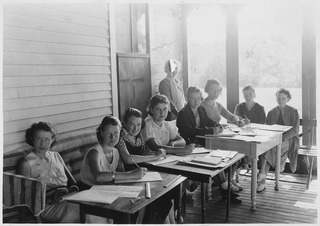
The She-She-She Camps were camps for unemployed women that were organized by Eleanor Roosevelt (ER) in the United States as a counterpart to the Civilian Conservation Corps (CCC) programs designed for unemployed men. ER found that the men-only focus of the CCC program left out young women who were willing to work in conservation and forestry and to sign up for the six-month programs living away from family and close support. She lobbied for a sister organization to the CCC that would be for young women. Eleanor Roosevelt proposed that this would consist of camps for jobless women and residential worker schools. The She-She-She camps were funded by presidential order in 1933. Labor Secretary Frances Perkins championed one such camp after ER held a White House Conference for Unemployed Women on April 30, 1934, and subsequently ER's concept of a nationwide jobless women's camp was achieved. While the public largely supported the New Deal programs and the CCC was a huge success, the women's version barely topped 5,000 women annually by 1936 and overall served 8,500 as a result of ER's support.
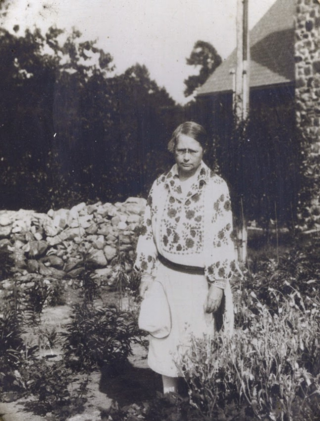
Elizabeth Fisher Read was a scholar and Women's Suffrage activist, and one of Eleanor Roosevelt's most dear friends.

Esther Everett Lape was a well-known American journalist, researcher, and publicist. She was associated with the Women's Trade Union League and was one of the founders of the League of Women Voters.

Anna Eleanor Roosevelt, née Roosevelt; ; ; She was the wife of Franklin Roosevelt. Because her husand was the longest serving president, Eleanor Roosevelt is the longest serving First Lady.


